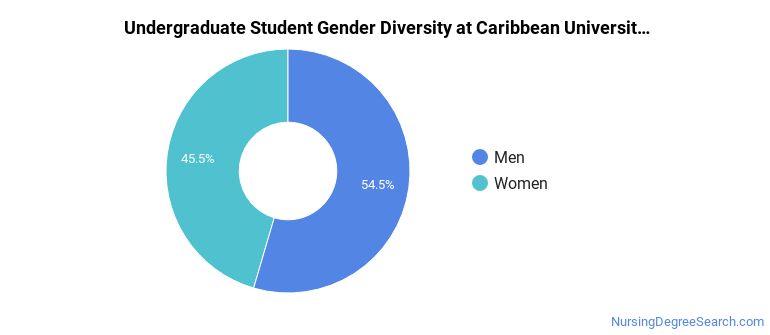Caribbean University - Bayamon Nursing Programs
Caribbean University - Bayamon is a private not-for-profit institution situated in Bayamon, Puerto Rico. Bayamon is a great location for students who prefer city over country life.
Where Is Caribbean University - Bayamon?

Contact details for Caribbean University - Bayamon are given below.
| Contact Details | |
|---|---|
| Address: | 167 Ave. Km 21.2, Bayamon, PR 00960-0493 |
| Phone: | 787-780-0070 |
| Website: | www.caribbean.edu |
How Do I Get Into Caribbean University - Bayamon?
You can apply to Caribbean University - Bayamon online at: form.jotform.com/201113968323046
Can I Afford Caribbean University - Bayamon?
Student Loan Debt
While almost two-thirds of students nationwide take out loans to pay for college, the percentage may be quite different for the school you plan on attending. At Caribbean University - Bayamon, approximately 16% of students took out student loans averaging $2,165 a year. That adds up to $8,660 over four years for those students.
Caribbean University - Bayamon Undergraduate Student Diversity

There are also 351 graduate students at the school.
Gender Diversity
Of the 506 full-time undergraduates at Caribbean University - Bayamon, 55% are male and 45% are female.

Racial-Ethnic Diversity
The racial-ethnic breakdown of Caribbean University - Bayamon students is as follows.

| Race/Ethnicity | Number of Grads |
|---|---|
| Asian | 0 |
| Black or African American | 0 |
| Hispanic or Latino | 506 |
| White | 0 |
| International Students | 0 |
| Other Races/Ethnicities | 0 |
Caribbean University - Bayamon Nursing Concentrations
The table below shows the number of awards for each concentration.
| Major | Associate’s | Bachelor’s | Master’s | TOTAL |
|---|---|---|---|---|
| Other Practical Nursing, Vocational Nursing and Nursing Assistants | 3 | 7 | 0 | 10 |
| Geriatric Nurse/Nursing | 0 | 0 | 8 | 8 |
| Maternal/Child Health and Neonatal Nurse/Nursing | 0 | 0 | 5 | 5 |
| TOTAL | 3 | 7 | 13 | 23 |
References
*The racial-ethnic minorities count is calculated by taking the total number of students and subtracting white students, international students, and students whose race/ethnicity was unknown. This number is then divided by the total number of students at the school to obtain the racial-ethnic minorities percentage.
More about our data sources and methodologies.
